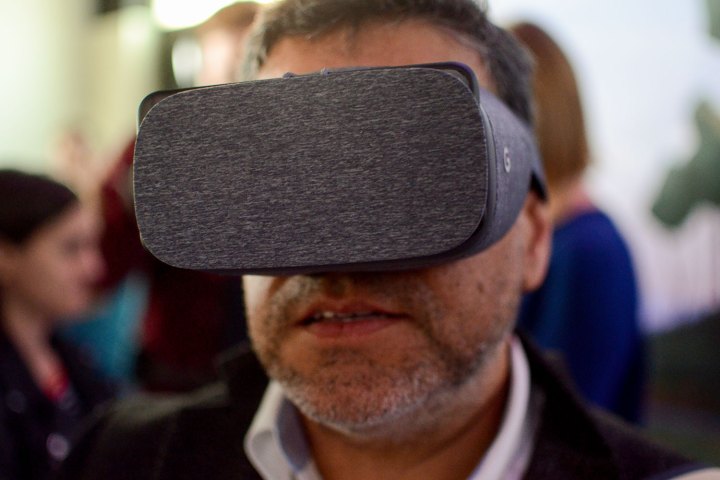
But the real message here is that Google is working to bring web-based VR content to all devices and headsets through its Chrome browser. “In the coming months we’ll add support for more headsets, including Google Cardboard,” Lindsay stated.
To access the VR content on a Daydream-ready phone, users first load up the Chrome browser, find the content they want to view, choose the VR option, and then shove the phone into the Daydream View headset. Otherwise, web surfers can view the same content on any phone or PC but are limited using their finger or mouse to interact with the content.
Here is a list of content highlighted in Lindsay’s blog:
| Bear 71: | This is an interactive documentary that “blurs the lines between the wild world and the wired one.” |
| The Matterport Library: | It is a tour of over 300,000 celebrity homes, museums, canyons, and other interesting locations across the globe. |
| Within: | This is a library of 28 VR films such as Walking New York, Notes On Blindness, Vice News VR, and more. |
| Sketchfab: | This site offers a huge library of VR scenes to experience including the Mars One mission base, a motorcycle clubhouse, a Batman Begins set, and so on. |
| The WebVR Lab: | This is a demonstration of the capabilities of WebVR, allowing viewers to switch records on a record player, pick up dice, and move around the environment. |
In these cases, the applications depend on an experimental version of JavaScript called WebVR. This enables the applications to speak directly to VR headsets like the Oculus Rift, HTC Vive, Samsung Gear VR, and Google Cardboard. Support for WebVR was added to Google Chrome version 56 for Android and in experimental builds for PC. It is built into Mozilla’s Firefox browser too.
Just for kicks, we tested a few of these on the Samsung Galaxy S7 Edge and Gear VR, and the demos worked just fine using Samsung’s browser. Keep in mind that these experiences are entirely web-based, and given that WebVR is still “experimental,” performance will be lower than dedicated optimized apps.
For instance, the WebVR Lab demo by Playcanvas was jerky when looking around but showcased the capabilities of WebVR’s current state. The Mars demo was rather neat too, if not choppy in movement, and highly jagged along the edges. Still, the WebVR demo enables (mostly) free movement around the Martian base whereas the same demo offered through Sketchfab’s app for Gear VR limits visitors to five stationary points in the scene.
Editors' Recommendations
- Google just settled a $5B privacy suit involving Chrome browser
- The Google Pixel Tablet is a bad idea that might just work
- Here’s why you need to update your Google Chrome right now
- Google Chrome on iOS gets 6 new features to take on Safari
- Google says Chrome is now 20% faster on Macs


